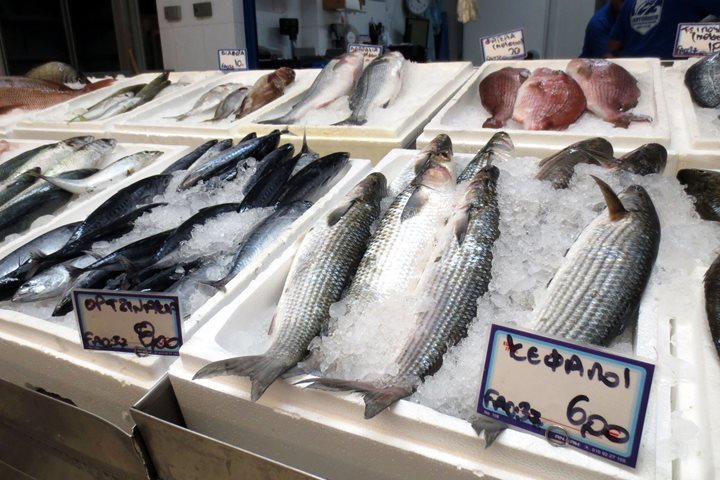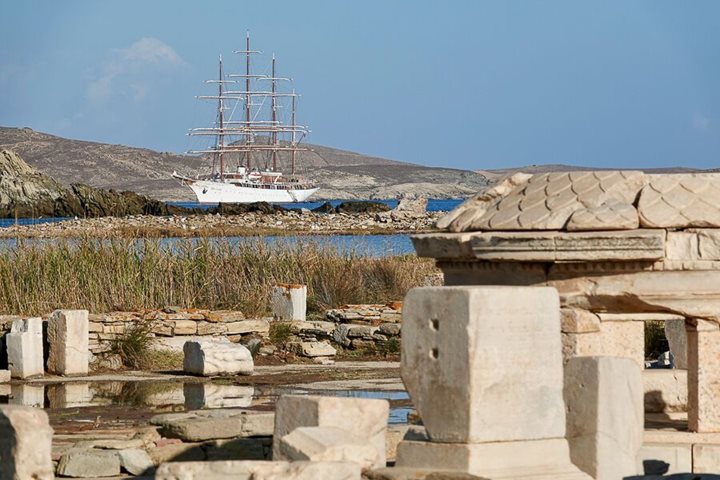We were once again swept back in time as we woke this morning at the uninhabited island of Delos, home to one of Greece’s great archaeological sites and the mythical birthplace of twins Apollo and Artemis. Delos has taken on several roles in civilization, beginning as a shrine to Apollo, a sacred sanctuary, and eventually a booming commercial center, which came to its height of power during the Hellenistic period. Now the large archaeological site remains. With a little imagination and interpretation from our local Greek guides, the magnificent city that once stood here came alive in our minds.
As we walked through paths that were once streets, we admired pillars and the colossal decorative bases of statues that stood taller than some of the buildings. At the Terrace of the Lions, we saw five large replicated lions where once 16 stood. The original lions were an offering from inhabitants from the island of Naxos in the seventh century B.C., given to guard the harbor and sacred site. Today, in order to protect the originals from the elements, several of them were on display in the nearby museum, which also houses large examples of the intricate mosaics that covered floors in some area.
Delos is unique in that its residential areas, which date from the Hellenistic Period, are still partially intact. We were able to walk through narrow walkways between homes, enter into the pillared atriums with mosaic floors, and get a glimpse of how people here lived long ago.
Standing tall above the ruins is Mount Kythnos. Several of us ascended the steep path to its peak, stopping to look into other building remains along the way. We were thankful for the strong wind that blew at higher elevations, seeming to help us up the path and keep us cool in the strong stun. At the top, with a spectacular view of the surrounding islands, it became clear why Delos was considered the center of the Cycladic universe and such an important part of Ancient Greek culture.







